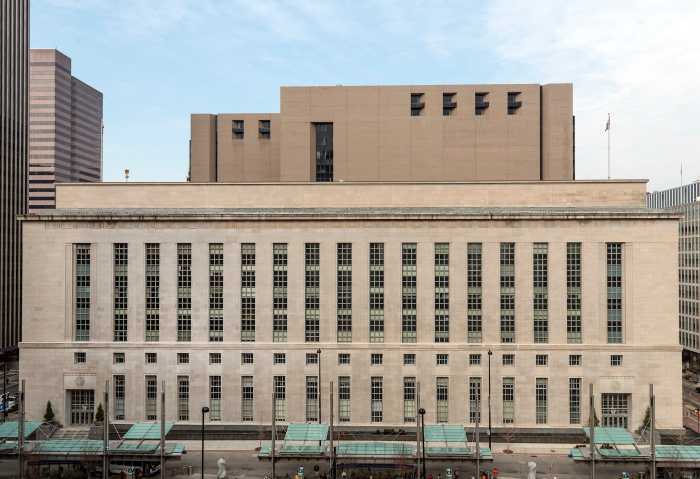A new analysis by a noted Brooklyn architect indicates that the Atlantic
Yards project is just as bulky as the state’s plans for Ground Zero.
The architect, Johnathan Cohn, came up with the startling conclusion that
the 17-acre residential and office village slated to surround Bruce Ratner’s
proposed Nets arena would include as much built space, per acre, as the
Ground Zero project, which will include more than 8 million square feet
of office and commercial space plus the world’s tallest building,
the Freedom Tower.
Cohn used a standard city zoning measurement called the floor-to-area
ratio, or FAR, to compare Ground Zero’s bulk with that of Ratner’s
9.1-million-square-foot residential and commercial development.
To calculate a FAR, building area is divided by site acreage.
Cohn said he relied solely on the developer’s own square-footage
numbers, but subtracted the arena — as well as existing streets that
will be demapped and incorporated into the project — so that his
numbers would reflect the situation at the remaining 17 acres.
As a result, he calculated that the residential and commercial component
of the project has a FAR of 12 — just a miniscule .12 lower than
the bulk of what is proposed for Ground Zero.
“Whether it’s all in four towers or spread over 18, we are talking
about the same ratio of building to area,” said the number-crunching
architect, a blogger at brooklynviews.blogspot.com.
Because it is a state project that doesn’t fall under city code,
Atlantic Yards would exceed the maximum permissible FAR in Prospect Heights.
If approved, it will be the largest development ever built in Brooklyn.
Prospect Heights artist Jon Keegan’s visual simulation of the Atlantic
Yards project seems to back up Cohn’s concern about the project’s
bulk.
Keegan created the simulation (see photo above) by punching the developer’s
own figures into Google Earth, which can superimpose digitally manufactured
images onto a satellite picture of a place.
The developer didn’t respond to calls about the simulation or Cohn’s
FAR numbers, but has said in the past that the project could shrink following
its environmental review.
Even as the developer refused to criticize Keegan’s rendering, plenty
of online critics did — although not the way Ratner might have.
Several slammed the artist for not including renderings of all the other
supposedly oversized buildings in the area that are in the planning phase
— many of which will have jerked up the skyline by the time Atlantic
Yards is built.

























